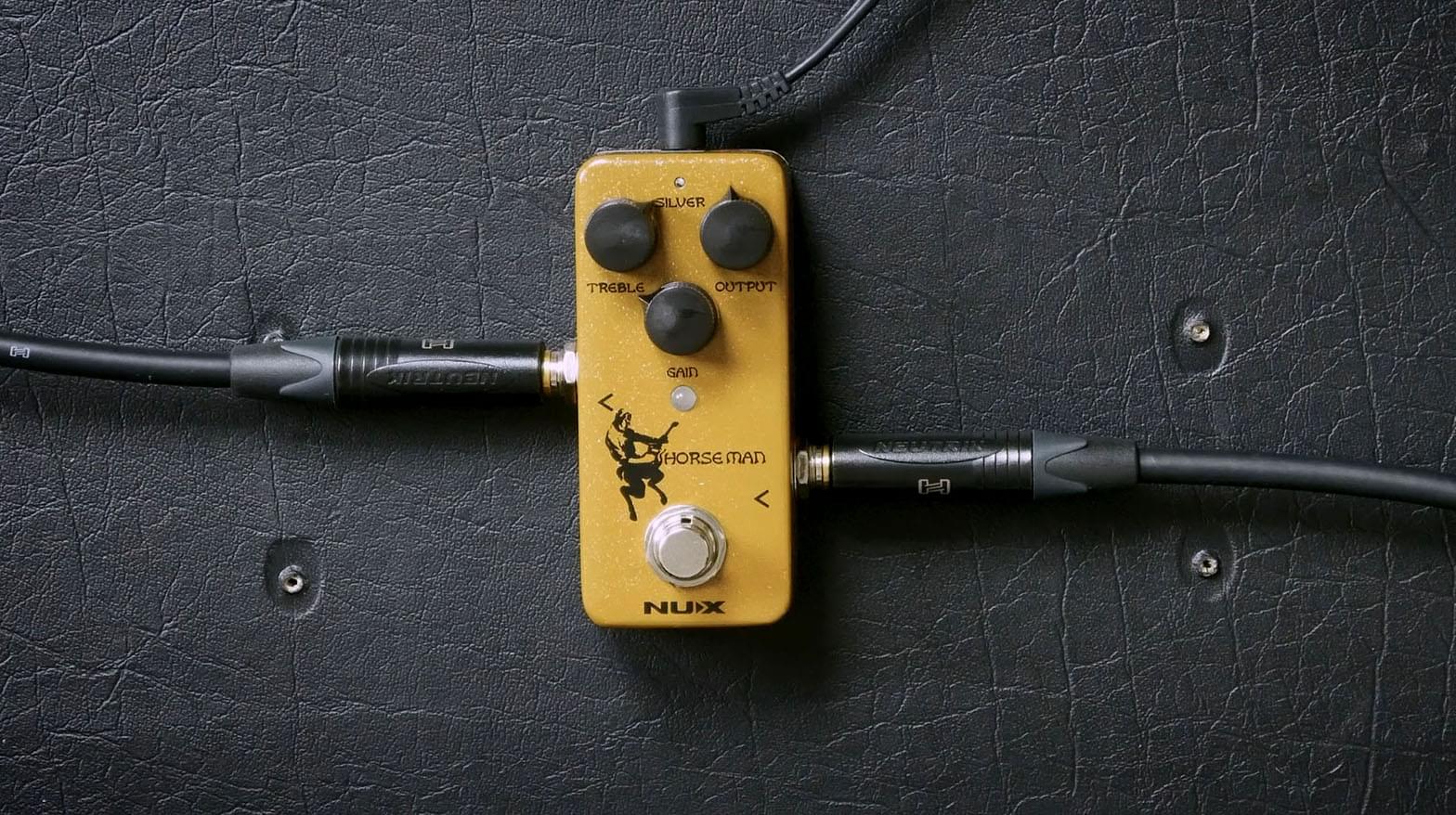Why settle for just one tiny Centaur interpretation in a small housing when you can have two for the same price?
Disclaimer: NUX Horseman was provided to me by NUX. However, the company has no say on the things I mention in the video, nor do they get to see the video/post before it is published.
Specifications:
- Gold and Silver modes: 2 independent pedal sounds in one mini stomp box
- Gain, Treble, and Output Controls
- Internal Voltage Converter from 9v to 18v
- Optional: True Bypass / Buffer Bypass
- Power: 9V Negative Tip

What Is NUX Horseman?
Let me state the obvious first: The NUX Horseman pays homage to the legendary sound of the mythical Centaur pedal. Not only that, but they’ve managed to pack both silver and gold versions of that sound into a tiny pedal that fits on any board. You can power with a 9V power supply, it runs at 18V internally, resulting in more headroom and dynamics.
How to switch between two modes of the pedal?
To switch between the two different sounds, hold the footswitch while the pedal is on. When the small LED at the top of the pedal lights up, the silver version of the pedal is engaged.
How to engage the true bypass mode?
If you want your signal to remain untouched when the Horseman is off, you can use the Horseman in true bypass mode. Push and hold the bypass footswitch while powering up the pedal. The LED indicator will show which bypass mode is activated (RED – True Bypass / GREEN – Buffer Bypass).
How does it sound?
I have never played the real Centaur, so I didn’t have any expectations of how this pedal ‘should’ sound. So I decided to try the pedal both with a clean amp (REVV Dynamis 7/40) and a crunchy amp (Hughes & Kettner Black Spirit 200.) I wanted to see how the pedal works with both. Using Telecaster with Sheptone pickups, I ran the gold side of the Horseman into the clean channel of the Dynamis. The result was a pleasant, slightly overdriven clean tone—a ‘hairy’ clean sound, if you will.
The pedal doesn’t squash the dynamics of the amp, probably because of the extra headroom it has with the internal 18V voltage.
From the first chords onwards, I started to understand what the fuss around this pedal is about. The gold version has way more gain on tap than I expected. I later realized the silver side is supposed to be even more aggressive. The treble control does what it’s supposed to and allows me to dial the exact amount of high end I want for my tone.
Switching to the bridge pickup of my Tele, Horseman’s gain at noon results in a killer rock sound that I’d be happy to put on any record. This guitar-pedal-amp combination just works.
Holding the footswitch to engage the silver Centaur mode gives more gain and aggression that I really like. I then switched to the Hughes & Kettner Black Spirit 200 on the crunch channel and confirmed that the Horseman sounds great with it as well. At this point, I’m starting to suspect this pedal would work with almost any amp out there.
Is NUX Horseman Good?
Using the NUX Horseman made me realize what the hype around the original Centaur pedal is: it’s a chameleon overdrive pedal. It retains the sound of your instrument and the dynamics of your amp while also adding some drive and saturation that’s very pleasant sounding. Not only that, but the pedal is also tiny, well-built, and houses two different circuits that complement each other well. If you’re looking for a ‘make-my-sound-better’ pedal, you probably should get the NUX Horseman.
If you’re interested in acquiring this pedal and supporting what I do, you can find affiliate links here:
►►Get your Nux Horseman at Thomann: https://thmn.to/thoprod/497299?offid=1&affid=394
►►Get your Nux Horseman at Reverb: https://reverb.partnerlinks.io/horseman
►►Hanki NUX-tuotteet Suomesta: https://www.musiikkisilfverberg.fi/tuotehaku?s=nux https://www.vantaanmusiikki.fi/tuotehaku?s=nux

Leave a Reply